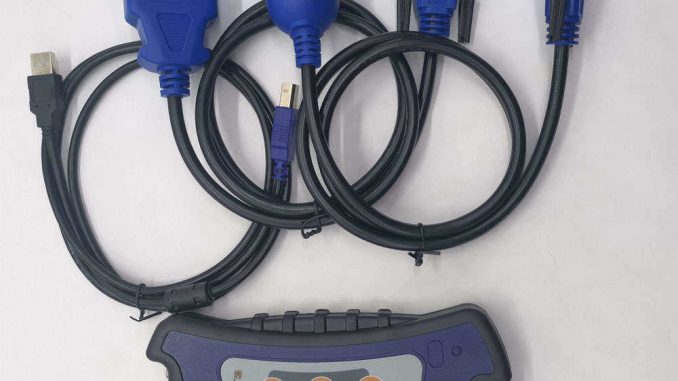
In the ever-evolving world of automotive technology, diagnostic tools play a pivotal role in ensuring vehicle performance and safety. One such tool that has gained significant recognition is the Nexiq USB Link 3 Wireless Edition. This advanced diagnostic interface is not just a successor to its predecessor; it embodies enhanced capabilities that cater to the diverse needs of automotive technicians and fleet managers alike.
Enhanced Connectivity and Flexibility
The Nexiq USB Link 3 distinguishes itself with its dual connectivity options. Technicians can connect wirelessly via Bluetooth or Wi-Fi to their PC, tablet, or smartphone, providing unparalleled convenience during diagnostics. Alternatively, for those situations where a direct connection is preferred or when wireless signals are interrupted, the included USB cable allows for a quick and reliable wired connection. This flexibility makes the USB Link 3 an essential tool for both fieldwork and in-shop diagnostics.
Support for Advanced Protocols
One of the standout features of the Nexiq USB Link 3 is its support for modern vehicle network protocols, including CAN FD (Controller Area Network Flexible Data-rate) and DoIP (Diagnostics over Internet Protocol). These protocols are becoming increasingly important as vehicles integrate more complex electronic systems. The USB Link 3 is capable of handling a variety of protocols such as CAN FD, J1939 FD, ISO15765 FD, Single Wire CAN (SWCAN), and ISO 11898-3 Fault Tolerant CAN (FTCAN). This extensive compatibility ensures that technicians can work on a wide range of vehicle makes and models without the need for multiple diagnostic tools.
Software Compatibility
The Nexiq USB Link 3 is designed to be versatile, supporting a broad spectrum of OEM diagnostic software. It is compatible with renowned applications such as Detroit Diesel Diagnostic Link, Cummins Insite, and International ServiceMAXX Fleet Pro, among others. This compatibility not only streamlines the diagnostic process but also enhances the technician’s ability to troubleshoot and resolve issues effectively across various vehicle brands.
How to use nexiq 3 usb link?
The Nexiq USB Link 3 is a powerful, multi-brand diagnostic interface designed for communication with commercial vehicles, construction equipment, and other industrial applications. Here’s how to set it up and use it effectively:
1. Setup and Installation
Install Drivers and Software: Before using the Nexiq USB Link 3, install the necessary drivers and diagnostic software (e.g., Cummins Insite, Detroit Diesel Diagnostic Link (DDDL), CAT ET, etc.) on your computer. The drivers are usually available on the Nexiq website or included on a CD with the device.
Connect via USB or Bluetooth: The USB Link 3 can connect to your computer through either a USB cable or Bluetooth. For USB, plug the device directly into the USB port. For Bluetooth, pair the device with your computer by following your computer’s Bluetooth settings.
Power On: The USB Link 3 powers up automatically when connected to a vehicle or a power source. Ensure the green power indicator light is on.
2. Connecting to the Vehicle
Locate the Diagnostic Port: Find the diagnostic port on the vehicle (usually a 9-pin or 16-pin connector for heavy trucks and machinery).
Connect the Device to the Port: Attach the USB Link 3 to the diagnostic port using the appropriate cable (such as a 9-pin Deutsch or OBD-II adapter). Ensure the connection is secure.
Check Connection Lights: Once connected, check that the connection and data lights on the USB Link 3 are active, indicating a successful link with the vehicle’s ECM (Engine Control Module).
3. Launching Diagnostic Software
Open Diagnostic Software: Launch the diagnostic software you plan to use. This could vary depending on the vehicle make or model (e.g., JPRO, Cummins Insite, DDDL).
Select Communication Interface: In the software’s communication settings, select “Nexiq USB Link 3” as the interface. Ensure it’s configured for USB or Bluetooth depending on your connection.
Vehicle Detection and Data Collection: The software should recognize the vehicle’s ECM and begin collecting data. You can now perform diagnostics, fault code readings, parameter changes, and other service functions.
4. Running Diagnostics
and Tests
Access Live Data: View live data for engine performance, emissions, fuel usage, and other system metrics. The software provides real-time information useful for troubleshooting.
Read and Clear DTCs: Diagnose and clear diagnostic trouble codes (DTCs) related to various vehicle systems, such as the engine, transmission, brakes, and aftertreatment.
Perform Functional Tests: Many diagnostic software packages allow for component testing, such as injector cut-out tests, cylinder performance, and sensor calibrations.
Program and Reflash Modules: Depending on your software, you may also perform reprogramming tasks, like updating ECM firmware or setting specific parameters.
5. Disconnecting and Shutting Down
Save Data: If needed, save diagnostic reports and data logs before disconnecting.
Close Software: Properly exit the diagnostic software.
Disconnect the Device: Unplug the USB Link 3 from the diagnostic port and your computer.
Tips for Using Nexiq USB Link 3
Battery: Ensure the vehicle battery is sufficiently charged to prevent connection loss.
Firmware Updates: Regularly check for firmware updates on the Nexiq website to keep the device compatible with newer vehicle models.
Bluetooth Connection Stability: For consistent connectivity, a USB connection is often more stable than Bluetooth, especially in high-interference environments.
In conclusion, the Nexiq USB Link 3 Wireless Edition stands out as a powerful and flexible diagnostic tool that meets the demands of modern automotive service. With its advanced connectivity options, support for cutting-edge vehicle protocols, and compatibility with a wide range of software, it empowers technicians to perform diagnostics efficiently and accurately. As the automotive industry continues to evolve, tools like the Nexiq USB Link 3 will undoubtedly remain at the forefront, helping professionals navigate the complexities of modern vehicle systems.
Leave a Reply